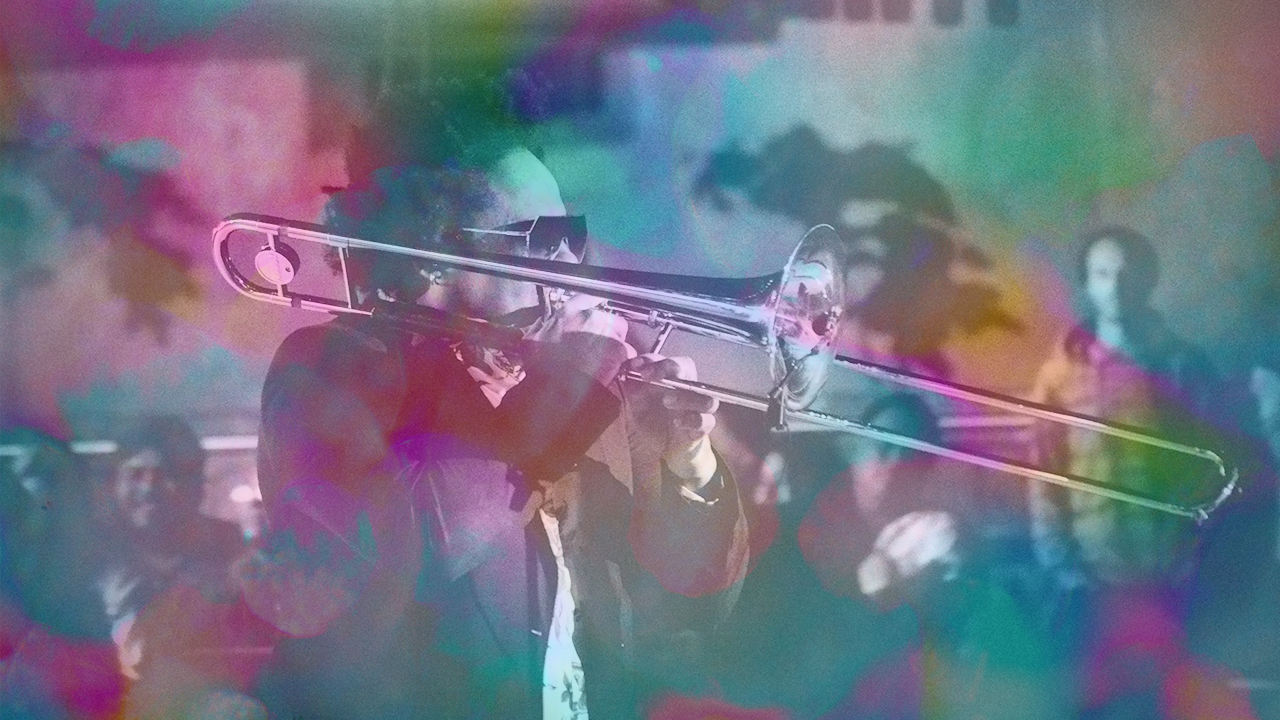The Progressive Underground’s Primer to Acid Jazz
A little over 30 years ago, a new rhythmic, danceable genre emerged in the London club scene: Acid jazz.

A little over 30 years ago, a new music genre emerged from the mid-80s London club scene. The focus was on obscure jazz records that featured jazz fusion and jazz-funk that was both rhythmic, danceable and could fill club dance floors.
This music was played by DJs raised on jazz, funk and hip hop; the fusion of these elements in their music sets became the building blocks of this new sound called acid jazz.
In 1988, prominent producers DJs Eddie Piller and Gilles Peterson started the Acid Jazz record label, officially coining the phrase. The label released a self-titled compilation series that reissued jazz-funk music from the 1970s and introduced the world to new artists who exemplified the sound.
Tune into the Progressive Underground for a creative and ethereal mix of electronica, b-sides, and rare grooves every Sunday night from 8 p.m. to 11 p.m
Click the player above to hear Chris Campbell’s history of acid jazz, and get a feel for the genre with these four quintessential tracks below.
1. Never Stop “Brand New Heavies”
One of the first acts signed to the label was The Brand New Heavies, a jazz/funk group out of Ealing, West London led by Jan Kincaid, Andrew Levy, Simon Bartholomew and vocalist N’Dea Davenport. “Never Stop,” one of their early hits, became a major influence on the sound and development of acid jazz.
“Never Stop’s” breakthrough to the mainstream, along with Gilles Peterson’s formation of the Talkin’ Loud record label helped the genre grab a foothold in underground and mainstream dance floors with the signing of other acts including Galiano, Young Disciples and Urban Species.
2. Whatchugot “Groove Collective”
Soon after, the acid jazz scene also took hold in the United States, with acts such as the Brooklyn Funk Essentials, Greyboy All-Stars, and Buckshot LeFonque enjoying critical success.
Groove Collective is a multi-ensemble group out of New York. “Whatchugot” was a massive hit from their seminal self-titled album.
3. Spirit of Voyage “Mondo Grosso”
With the United States and the UK in tow, the acid jazz genre garnered an international following with strongholds in Germany, Brazil, Eastern Europe and Japan.
Japan in particular produced many important groups from that era included United Future Organization, Gota and Mondo Grosso (the alias of Japanese producer Osawa Shinichi).
These Japanese bands that brought an even more organic dynamic to the live sound aesthetic of the genre.
4. Jamiroquai’s “Blow Your Mind”
With the rise of electronic club music in the mid-1990s to early 2000s, the acid jazz genre experienced a decline, but it did inspire and become intertwined with other genres such as broken beat, trip-hop and neo soul. It lives on as many groups from that era continue to record and enjoy enduring careers, despite the reduction of its worldwide following.
One major aspect of its legacy is the live music aesthetic which fueled the jam band movement of the early 2000s by improvisational style acts like Medeski, Martin and Wood, Greyboy All Stars and many more. But, above all, Acid Jazz galvanized a global music community who were hungry for live band sounds, deep funk and jazzy vibes around a network of music lovers who tapped into the era’s fascination with jazz history and DJ culture and jazz-inspired dance grooves.
Formed in London in 1992, Jamiroquai is perhaps the most noteworthy act from the acid jazz genre. “Blow Your Mind,” off of their debut album “Emergency on Planet Earth” is a track that pushed the acid jazz genre forward to a global audience.
Trusted, accurate, up-to-date
WDET is here to keep you informed on essential information, news and resources related to COVID-19.
This is a stressful, insecure time for many. So it’s more important than ever for you, our listeners and readers, who are able to donate to keep supporting WDET’s mission. Please make a gift today.

